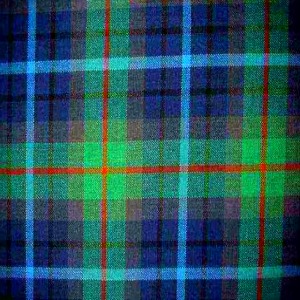New York’s annual nod to all things Scotland gets underway next week with a run of receptions, theater programs, whiskey tipples and occasions for kilts. Specifically, New York Tartan Week marks Scotland’s Declaration of Arbroath, and more broadly commemorates the region’s contribution to American history.
“It resonates with America because [the Declaration of Arbroath] was used as a kind of foundation for America’s Declaration of Independence," said Margaret Kennedy, president of the National Tartan Day New York Committee. "So it does have that resonance with what’s important in America, and the idea of individuals being important and being allowed an independent way of life and of thinking.”
The Declaration of Scottish Independence, or the Declaration of Arbroath, was drafted on April 6, 1320 and submitted to Pope John XXII. The statement marked a broader effort at the time to assert Scotland’s self-determination in the face of ongoing English control. U.S. Senate Resolution 155 was passed in 1998 and officially recognized April 6 as National Tartan Day.
The crowning event of New York Tartan Week will be the April 9th parade up 6th Avenue from 45th to 55th Streets.
“To walk up 6th Avenue—please, on a sunny day—but to walk up if it has driving rain or not, and to have so many people on the sidewalks waving the flags,” said Kennedy, “it just makes you so proud to be marching in New York, feeling Scottish.”
The grand marshal of this year’s parade, Bob Winter, is the lord provost of Glasgow. Scottish government Minister Jim Mather and U.S. Senator Liz Krueger will also attend the parade. In 2002, Sean Connery served as grand marshal of the parade, dressed in a kilt cut from New York City tartan.
 Visible among the waves of Black Watch, Stewart Dress and Mackinnon Hunting tartans during this year's parade may well be swaths of New York City tartan (pictured at left). This city-specific plaid was designed by Alistair Buchan, chairman of Locharron of Scotland, a family-run Scottish tartan company.
Visible among the waves of Black Watch, Stewart Dress and Mackinnon Hunting tartans during this year's parade may well be swaths of New York City tartan (pictured at left). This city-specific plaid was designed by Alistair Buchan, chairman of Locharron of Scotland, a family-run Scottish tartan company.
"When the first Tunes of Glory parade was planned for New York," said Buchan of the first Tartan Day parade in 1999, "we were asked to create a tartan to celebrate that first parade, so I designed that."
Buchan drew on his observations of the city over many years of work here and his "feelings of the buildings and the colors of Central Park" to create the New York City tartan design.
In the wake of the September 11 attacks, Buchan changed the design to include two black lines "to commemorate the disaster at 9/11," he said. Mayor Koch subsequently asked Buchan to change the tartan's name from the Tunes of Glory tartan to the New York City tartan.
"The biggest impact we get now as far as Tartan Day is concerned is this fabulous parade in New York," Buchan said. "There is a close affinity between Scotland and New York because of that. There are still hundreds and hundreds of people that fly over to New York for Tartan Day."
For Buchan, the celebration has also meant good business.
"We just love the idea that there is this connection between New York and Scotland. But as far as we're concerned, we feel it's more with America and Scotland," Buchan said. "It does recognize the huge impact there's been from Scottish immigrants into both countries. And it's something that's very important to us as a business because we actually sell more kilts in Canada and the States than we do in Scotland."
Events that are part of New York Tartan Week, which kicked off on March 29, run through April 10.